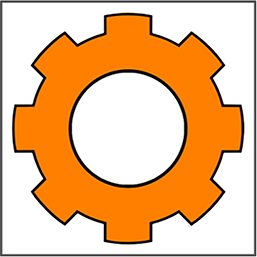Shapes and Spaces
- An Exhibit at The Gearbox Gallery with Artists Irene Nelson and Sheila Ghidini
- April 30 through June 5, 2021
- Fridays and Saturdays, noon to 5:00 p.m.
This interview was conducted virtually on March 26, 2021 via Zoom
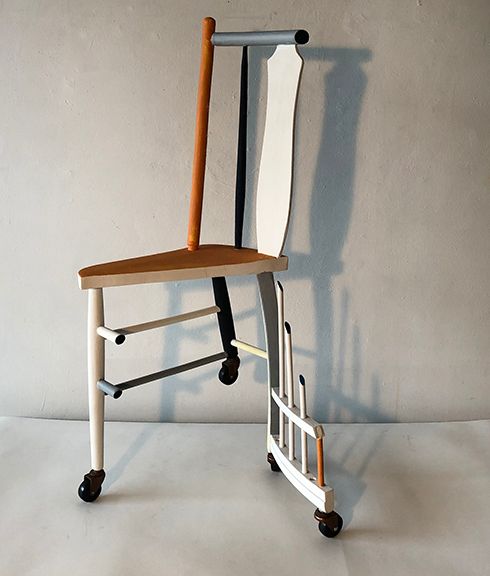
I see such a strong connection to architecture.
I think of chairs as mini architecture. The chair possesses all the same characteristics of a basic structure, like a house that one would inhabit. That is what initially drew me to working with this structure. I like its human scale and the fact that it can imply absence and presence at the same time.
(Sheila does a lot of graphite drawing and utilizes linear perspective as an organizing principal to represent space. In these drawings which often include drawn chairs she sets up a dialectic of real and illusionary space.)
Have you always been interested in chairs?
My interest in chairs and furniture as building material began before graduate school. I have always been drawn to the structure, the simple element of four supports, a platform and a back. I think it was an early influence from my childhood. My dad was a builder/carpenter and a contractor, and the houses we lived in were always works in progress. I became very sensitized to structure, particularly domestic structures and how they are put together.
Going back to your education, were you always interested in three dimensional art or was that something that developed out of two dimensional art, like painting?
I have always been interested in both. I’m not really a painter, but I do draw a lot and that has been how I have worked two dimensionally. But I’ve also always made things; I really enjoy the process of putting things together as well as being able to represent the illusions of things (as in the drawings).
(We talked about color and the fact that Sheila does not use a lot of color in her work.) Red is intense. I find it a very emotional color and I don’t use it often. (The color in her chair pieces is muted and soft).
When you use a found object, a chair, and you deconstruct and then reconstruct it, are you using only that material or are you incorporating other materials as well? (We discussed artists and art movements that influenced Sheila.)
I’ve always been interested in Arte Povera, a movement that evolved in Italy as a reaction to American Modernism in the late 60’s. Using available resources and working with ordinary materials was part of their approach. The idea of the found chair is related to this. I do add other materials that I find that I think are in relation to the particular sculpture. https://en.wikipedia.org/wiki/Arte_Povera
Let’s talk about A Curved Space.
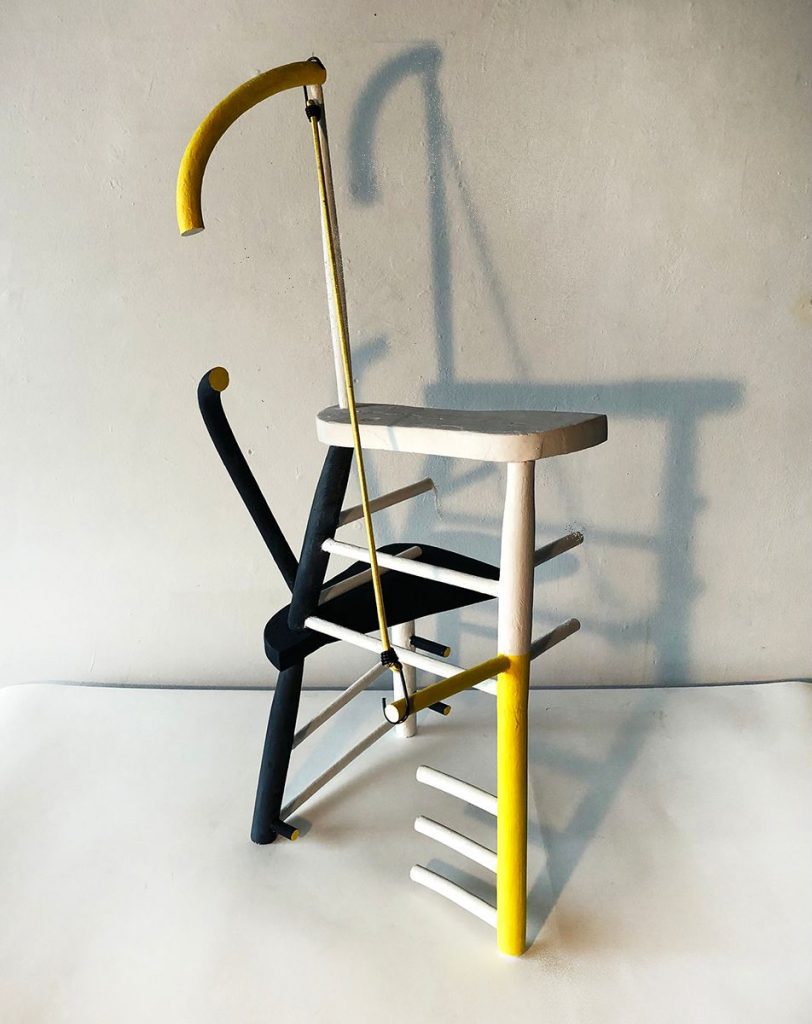
It’s that upper curved shape that I am referencing in the title of the piece. All the parts of this piece are from the one chair. Another artist I really admire is Rachel Whiteread. She lives in London and casts negative spaces of big architectural structures. The negative space is the final sculptural object. Her thinking is along the lines that there is memory embedded in familiar objects and spaces. I really love that idea. Metaphorically, it is related to how I approach using found objects in my work. There is a certain way they want to be rearranged and I try to follow that. I like to think of it as the memory that is embedded in that particular object. https://en.wikipedia.org/wiki/Rachel_Whiteread
(We had a discussion about negative space.) I don’t know where it got that name because I find it very charged and a valuable positive element to work with.
Where do you find your chairs?
A lot of them are from my neighborhood. I’ll see them on the street while walking and collect them. I always know the source, where they come from. I am particularly drawn to wood chairs because I like the idea that their source is a tree. I’m interested in context. Where did that chair come from and what is its broader place.
Let’s look at Source.

I’m referencing the idea of place and connection to it. A tree is integrally connected to its place atmospherically and in the way it pulls from the soil. On so many levels, a tree is a interconnected to place. There is as much underground as above and it is all interconnected.
Is there any one chair that you want to talk about? Is there any one that is different conceptually than the rest?
They are all similar in the fact that their context is important to me. It’s rarely a single, isolated thing. Most of the sculptures in this exhibit are part of a Rearranging Furniture series, with the exception of Displaced Spaces. This piece has thread and map pins, locating it in space. The thread lines define the spaces the chair previously occupied. This is a different series of works, called Isometry series. This series consists of drawings and sculpture all of which incorporate folded spaces marked by metric points.
How about Shifting Spaces? It seems different in that it is on casters.
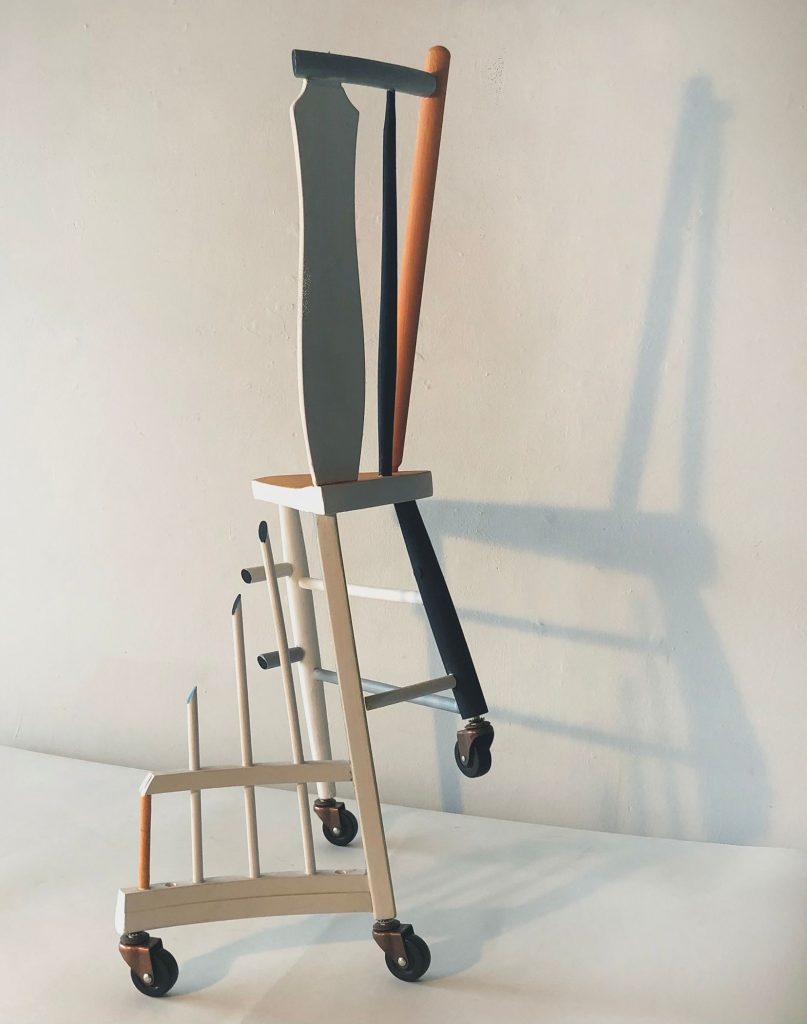
It’s mostly one chair but there may be a couple of parts that came from another. I added the casters. The place I found that chair was outside of a house that was being cleared out. Things were being tossed out and I collected this chair that had been placed on the street. I later learned that there was an old man who lived in the house and he was being shifted to a nursing home. All of the contents of the house were being shifted. It was the thought of all of this movement that made casters seem right to add.
The color on this chair is minimal. Did you add the color?
The color was added but often there will be some of the color on the chair and I amplify that color. The casters have a copper part that seemed to go well with the coppery color of some of the chair parts.
The photos of your chairs are close to walls and cast beautiful shadows. Are they meant to be seen that way?
They are meant to be viewed from all sides, but I do like working with cast shadows. I have done a number of wall sculptures in which I add in my own invented shadows as wall drawings. Cast shadows are as potent as negative spaces.
Let’s talk about Rearranging Furniture 2.
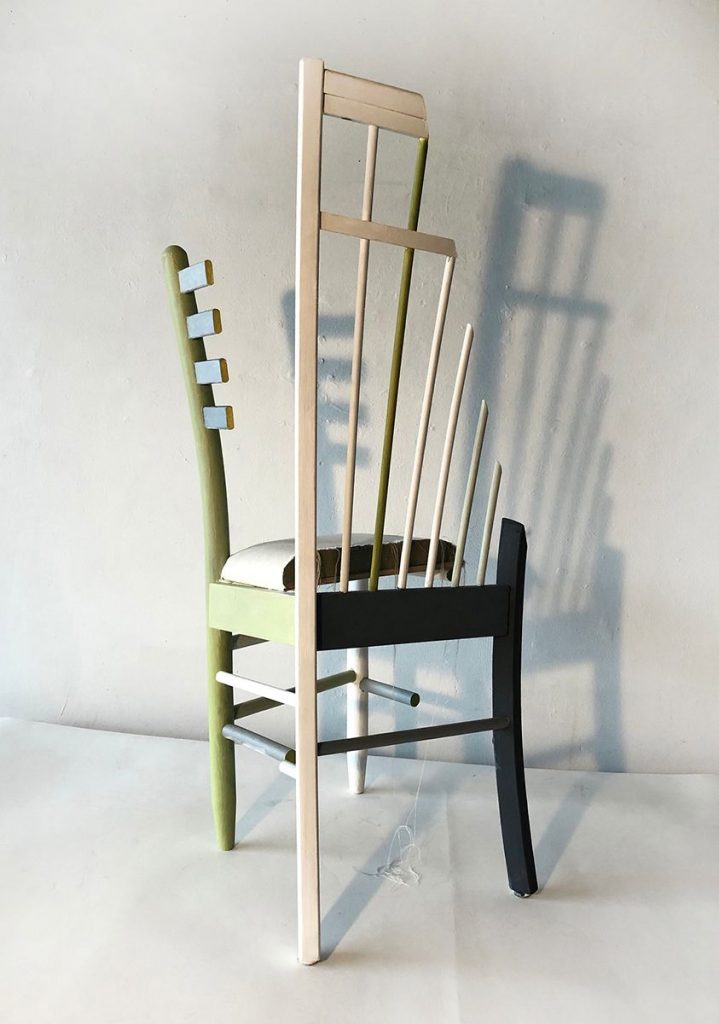
One of the things that draws me to these chairs is that they are domestic, they come out of someone’s home. It seems to me that the activity of rearranging furniture is a domestic activity also. My approach to building these sculptures is like the activity of rearranging furniture literally, moving parts from one place to another. When you rearrange furniture within your home, you see the things and the spaces they create differently.
In this piece I see something that looks like string coming down to the floor. What is that?
I cut the chair in half and it was an upholstered seat so the threads from fabric fell and became entangled. I felt the hanging threads worked with the rest of the sculpture.
What does your work have in common with Irene’s for this joint exhibit?
In the beginning of our collaboration I came to realize that one of our common connections is on a formal visual level, it’s not so much the ideas behind the work. When I look at Irene’s work I see strong relationships between shapes and negative spaces. I also work with spacial relationships. I try to rearrange spaces and shapes and put them back together in the way that Irene rearranges shapes and spaces in her work.
I want to come back to this concept of home. Have you ever created a sculpture with a specific person in mind (other than the one about the man being moved out of his home)?
I don’t usually try to do that. I have been asked if the chairs are surrogates for people but I don’t see them that way. I see them in a structural context. Factors of the person who inhabits the area may get layered into the sculpture, but not so much that the piece represents the person. They certainly aren’t portraits of any kind.
Because of the human scale of a chair, I can move them from one location to the next. One of my building guidelines in making anything is that it is not so heavy that I cannot carry it. I need to know I can move the work.
Have you ever looked at a chair in your own home and thought, “I have to use it.”
Oh yeah, and I’ve used it! There is a kind of elegance I look for in a chair. I like minimally built chairs and primarily wood for sculptures. It’s really an iconic chair image that I’m interested in and want to use. I’ve used other pieces of furniture, besides the chair, in sculpture also.
Are you creative in other ways that we haven’t talked about?
I cook and I’m a constant gardener. I have two beautiful gardens (one flower and one vegetable). One is around my house and the vegetable garden is in a nearby community garden.
(We talked about Sheila’s long teaching career and that she continues to enjoy teaching.) It seems to me that there has been a shift in the teaching of art over time away from materials and techniques towards concept. Have you noticed that?
When I was in undergraduate school a similar shift was happening at Hartford Art School, University of Hartford in Connecticut. The school went from one that was very skill and material oriented to one that was basically idea driven. This was in the 70’s and conceptual art was very influential in New York. My educational experiences have supported both concept and craft. I always value hand work as an important aspect in art. I’m more interested in metaphor than in descriptions of things. I like to think the things I make are like poems. Rhyming is part of my creative process, both conceptually and visually.
When you begin a piece, how much analysis and planning goes into it as opposed to simple spontaneity?
I begin intuitively but as things move along, because I am working with actual gravity and real physical space, there is also a degree of planning. I use my sketchbook to rearrange parts as I work on a piece. I’ll stop to draw parts out to see what possibilities might be.
I always end these interviews with a question that I ask of myself all the time. The question is, “Why do you do it?”
For me I had no choice. I’ve been using art as my means of expression from an early age. I didn’t really choose it. It chose me.
